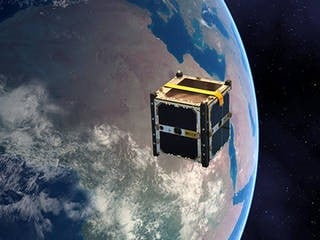Challenges in Reliability Analysis of Aerospace Electronics
A special issue of Aerospace (ISSN 2226-4310).
Deadline for manuscript submissions: closed (30 November 2018) | Viewed by 44804
Special Issue Editors
Interests: reliability of electronic components; model-based systems engineering/model-based mission assurance; physics of failure-based reliability analysis, simulation, radiation effects; fatigue and fracture in electronic component packaging
2. Departments of Mechanical and Material, and Electrical and Computer Engineering, Portland State University, Portland, OR 97201, USA
3. College of Science and Technology, Bordeaux University, 33405 Talence, France
4. ERS Co., Los Altos, CA 94024, USA
5. Garrick Institute for the Risk Sciences, UCLA, Los Angeles, CA 90095, USA
Interests: applied mathematics, applied mechanics, probabilistic methods in reliability engineering, technical diagnostics; composite and smart materials and systems; shock and vibrations analyses and testing; thermal stress analysis; human-in-the-loop; aerospace missions success and safety
Special Issues, Collections and Topics in MDPI journals
Special Issue Information
Dear Colleagues,

Aerospace electronics is continuously evolving in the variety of mission applications and through the ever-increasing demands of complex systems that must meet the environmental challenges presented by space and aircraft operations. Electronic and photonic components serve to collect data, provide controls and communications, and afford power regulation in integrated systems, and they must survive launch vibration, thermal environments, and radiation exposure. Traditional components used for aerospace are giving way to commercial off-the-shelf solutions that can provide greater performance at lower costs. At the same time, the design processes are evolving into more agile and cost-effective approaches while antiquated standards based upon military handbook methods are no longer adequate for design analysis.
The emergence of Model-Based Systems Engineering (MBSE) to govern the synthesis of the architecture is rapidly evolving, and MBSE-driven reliability analysis is following quickly along with it, providing for new high-value approaches to system reliability analysis. Physics of failure is now recognized as an important technique in reliability analysis at the board and component level. An obvious nexus is emerging to create a complete solution to reliability analysis. Many new developments are needed which will incorporate all sources of data into the analytical process to rapidly assure that systems will meet the demands.
This Special Issue of the online journal Aerospace is seeking a wider range of papers covering the latest developments in the reliability analysis of aerospace electronics. Of special interest are the latest developments driven by MBSE at the system level. In addition, articles covering the latest developments and applications of the physics of failure—inclusive of radiation effects—are sought for this journal. This includes the analysis of failure mechanisms and the incorporation of probabilistic methods concurrently with physics of failure, as well as effective uses of test data and field operational data within the analytical framework.
Dr. John W. Evans
Prof. Dr. Ephraim Suhir
Guest Editors
Manuscript Submission Information
Manuscripts should be submitted online at www.mdpi.com by registering and logging in to this website. Once you are registered, click here to go to the submission form. Manuscripts can be submitted until the deadline. All submissions that pass pre-check are peer-reviewed. Accepted papers will be published continuously in the journal (as soon as accepted) and will be listed together on the special issue website. Research articles, review articles as well as short communications are invited. For planned papers, a title and short abstract (about 100 words) can be sent to the Editorial Office for announcement on this website.
Submitted manuscripts should not have been published previously, nor be under consideration for publication elsewhere (except conference proceedings papers). All manuscripts are thoroughly refereed through a single-blind peer-review process. A guide for authors and other relevant information for submission of manuscripts is available on the Instructions for Authors page. Aerospace is an international peer-reviewed open access monthly journal published by MDPI.
Please visit the Instructions for Authors page before submitting a manuscript. The Article Processing Charge (APC) for publication in this open access journal is 2400 CHF (Swiss Francs). Submitted papers should be well formatted and use good English. Authors may use MDPI's English editing service prior to publication or during author revisions.
Benefits of Publishing in a Special Issue
- Ease of navigation: Grouping papers by topic helps scholars navigate broad scope journals more efficiently.
- Greater discoverability: Special Issues support the reach and impact of scientific research. Articles in Special Issues are more discoverable and cited more frequently.
- Expansion of research network: Special Issues facilitate connections among authors, fostering scientific collaborations.
- External promotion: Articles in Special Issues are often promoted through the journal's social media, increasing their visibility.
- e-Book format: Special Issues with more than 10 articles can be published as dedicated e-books, ensuring wide and rapid dissemination.
Further information on MDPI's Special Issue polices can be found here.






